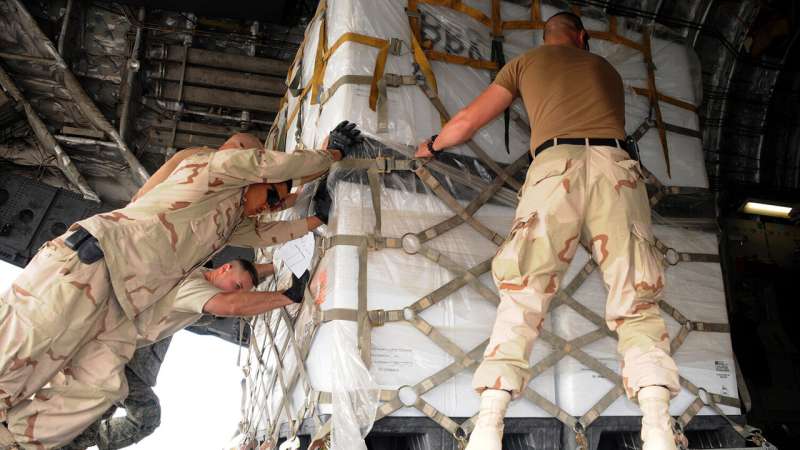Modeling tool addresses uncertainty in military logistics planning

Military deployments to austere environments—whether humanitarian missions or combat operations—involve extensive logistical planning, which is often complicated by unforeseen events. Researchers at North Carolina State University have now created a model aimed at helping military leaders better account for logistical risk and uncertainty during operational planning and execution.
"Every branch of the military now uses an enterprise resource planning (ERP) system that handles everything from requisitions to shipment of supplies to inventory tracking," says Brandon McConnell, corresponding author of a paper on the new model and a research assistant professor in NC State's Edward P. Fitts Department of Industrial and Systems Engineering. "These ERP systems make it possible to create computational models that can be used to identify the most efficient means of meeting the military's logistical needs.
"These models would be particularly valuable during expeditionary operations, in which the military is seeking to establish its presence—and its supply chain—in an environment that is subject to a fair amount of uncertainty.
"The model that we've developed can not only facilitate the military's ability to efficiently determine what will be needed where, but can also assess risk in near real time in order to account for uncertainty," says McConnell, a former infantry captain in the U.S. Army who served two tours in Iraq.
The new model, called the Military Logistics Network Planning System (MLNPS), draws on three sources of information. First is logistical data from the ERP system. Second is operational data, such as an operation's mission, organization and timeline. Third is data on "mission specific demand," meaning logistical requirements that are particular to a given mission and its environment. For example, a combat operation being conducted in a cold, damp environment would have different requirements than a humanitarian mission being conducted in a hot, dry environment.
The MLNPS also uses two factors to assess risk and determine how risk might affect military capacities. The first factor is the likelihood that an event will happen; the second factor is what the consequences of that event will be. For example, if the likelihood of two events is identical, the model would give more weight to the event that could have a greater adverse impact on military personnel and mission performance.
"The MLNPS uses all of the available data, accounts for risk, then forecasts what the logistical outcomes will look like in reality," McConnell says. "The MLNPS can be used as a decision planning aid, allowing leaders to test-drive plans in order to identify courses of action that will best support carrying out an operation."
The MLNPS could also be used while an operation is being executed, as part of contingent logistical planning efforts that take place as circumstances change on the ground.
"Right now, the MLNPS is a robust proof-of-concept prototype, designed to demonstrate the potential value of powerful computational tools that can make use of ERP systems," McConnell says. "Existing logistical tools are both valuable and powerful. However, I'm not aware of any other methods that make use of ERP data and are also fast enough for operational use when time is of the essence."
"This research lays the mathematical and operational foundation for construction of a network-based model that captures routing alternatives and characterizes solutions for capacity planning and resiliency analysis in near-real time," says Joseph Myers, Army Research Office mathematical sciences division chief at the Combat Capabilities Development Command's Army Research Laboratory. "This project will provide military logistics planners with capabilities that are currently lacking in prevalent logistics planning tools."
More information: Brandon M McConnell et al, Assessing uncertainty and risk in an expeditionary military logistics network, The Journal of Defense Modeling and Simulation: Applications, Methodology, Technology (2019). DOI: 10.1177/1548512919860595
Provided by North Carolina State University


















